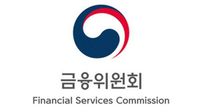South Korea's Financial Services Commission (FSC) has announced a sweeping set of measures aimed at tightening household debt management, particularly targeting the soaring mortgage loans in the Seoul metropolitan area and other regulated regions. This decisive move, revealed during an emergency meeting on June 27, 2025, comes as the government seeks to curb the rapid rise in housing prices and the corresponding surge in household borrowing.
At the heart of these new regulations is a strict cap on mortgage loans for home purchases, limiting them to a maximum of 600 million won (approximately $480,000) in the metropolitan and designated regulated areas. Previously, mortgage lending was governed primarily by Loan-to-Value (LTV) ratios and Debt Service Ratios (DSR), without a fixed ceiling on the total loan amount. Now, this hard cap aims to prevent excessive borrowing for high-priced homes.
First-time homebuyers, who until now enjoyed an 80% LTV allowance nationwide, will see this benefit curtailed to 70% within these high-demand areas. Additionally, they must fulfill a mandatory move-in requirement within six months of loan issuance, a policy designed to ensure that loans are used for genuine housing needs rather than speculative purposes. This rule also applies to policy loans such as the Ddidimdol and Bogeumjari programs, which provide government-backed financial support for home purchases and rental deposits.
Furthermore, the government has imposed a blanket ban on additional mortgage loans for individuals owning two or more homes in these regions. For single-home owners, new mortgage loans are only permissible if they commit to disposing of their existing property within six months. This conditional approach seeks to discourage 'gap investing'—a practice where investors exploit the price difference between purchase and lease to generate profit.
In a bid to tighten controls over rental housing finance, the FSC has also prohibited Jeonse loans (deposit-based lease loans) that are conditional upon ownership transfer within the metropolitan and regulated areas. The guarantee ratio for Jeonse loans will be reduced from 90% to 80% starting July 21, 2025, encouraging financial institutions to apply stricter credit assessments.
To prevent borrowers from circumventing debt regulations through extended loan maturities, the maximum term for mortgage loans in these areas has been capped at 30 years, down from the previous allowance of up to 40 years. This change aims to reduce the risk of borrowers overextending their repayment period to mask true debt burdens.
Credit loans, often used to supplement real estate purchases, will now be limited to amounts within the borrower's annual income, down from a previous allowance of up to twice that figure. This measure is intended to block the use of unsecured credit for speculative property investments.
Policy loan limits have also been reduced significantly. For example, the maximum Ddidimdol purchase loan for first-time buyers has dropped from 300 million won to 240 million won, while newlywed couples’ limits have fallen from 400 million won to 320 million won. Similar reductions apply to Bogeumjari Jeonse loans, with first-time buyers and youth seeing limits lowered from 200 million won to 150 million won, and newlyweds in the metropolitan area from 300 million won to 250 million won.
Living stability fund mortgage loans—loans secured against owned homes for personal financial needs—are now capped at 100 million won in metropolitan and regulated areas. Moreover, those owning two or more homes are completely barred from accessing these loans, a move designed to prevent the leveraging of multiple properties for personal loans.
The FSC has mandated that these measures take effect immediately where possible, with the majority becoming enforceable from June 28, 2025. Transitional provisions will protect existing borrowers and applicants who entered contracts before the new rules, minimizing harm to genuine homebuyers and renters.
Kwon Dae-young, Deputy Commissioner of the FSC, stressed the urgency of these measures, stating, "Now is the time for financial authorities, related institutions, and the financial sector to manage household debt with extraordinary resolve. All financial institutions must rapidly and thoroughly implement these household debt management measures, including reducing total loan targets, expanding self-regulatory efforts, and limiting mortgage lending." He also acknowledged that the policy changes might cause inconvenience and complaints among customers, urging financial institutions to ensure smooth operations through staff training and system checks.
To ensure effective enforcement, the FSC plans to hold weekly household debt review meetings with financial authorities and institutions. This proactive monitoring will include close observation of monthly and quarterly loan management target compliance, as well as regional lending trends. The FSC remains prepared to enact further measures if necessary, such as tightening LTV restrictions in regulated areas, expanding DSR application to Jeonse and policy loans, and adjusting risk-weighted values for mortgage loans to maintain financial stability.
Regulated areas currently encompass key districts within Seoul, including Gangnam-gu, Seocho-gu, Songpa-gu, and Yongsan-gu—regions notorious for rapid price escalations and speculative investment activity.
These comprehensive steps reflect the government's determination to cool down an overheated housing market and prevent the household debt burden from spiraling out of control. By restricting loan accessibility and tightening credit conditions, authorities hope to steer the market towards more sustainable growth and protect vulnerable borrowers from financial distress.
The new regulations also signal a shift in policy focus—from encouraging homeownership through accessible credit to prioritizing financial prudence and market stability. As these measures take hold, prospective buyers and investors will need to navigate a more constrained lending environment, potentially reshaping the dynamics of South Korea's real estate market for years to come.




